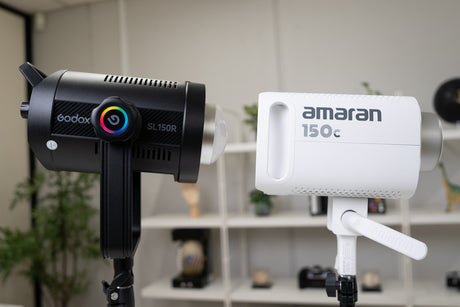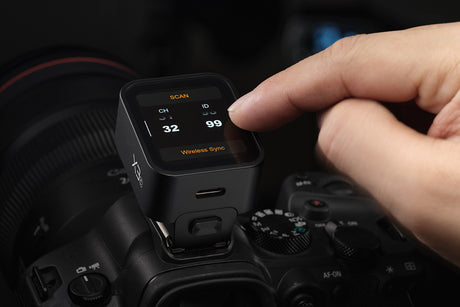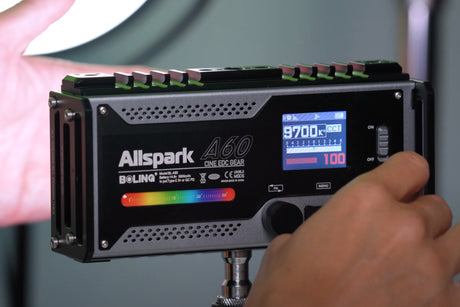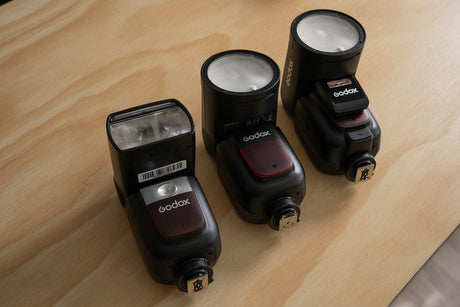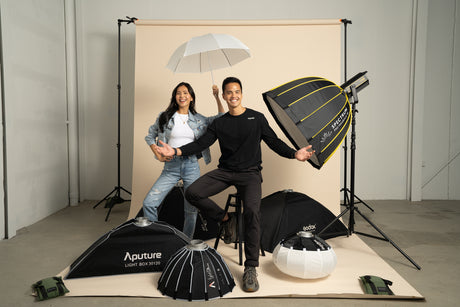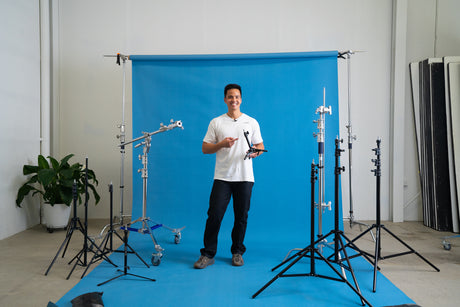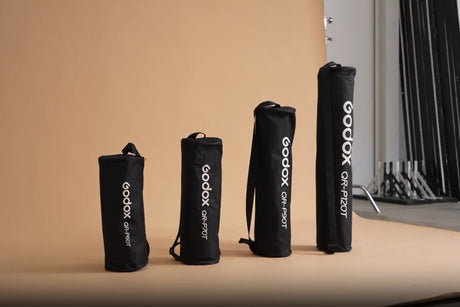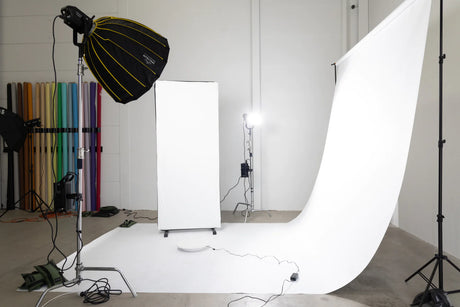No photography studio is complete without reflectors. Most professional photographers, particularly portrait photographers, rely on reflectors in nearly every photoshoot. While reflectors aren’t actually lights, they do play quite an important role in a basic studio lighting setup for portraits.
What Are Reflectors?
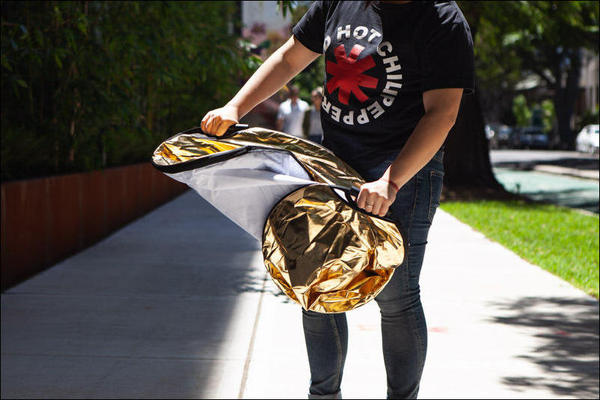
They’re a simple tool that makes a big difference in the quality of your photographs. Reflectors can be used in many ways—as fill light, for example, to counter severe shadows that are on the opposite side of your key light or they can also be used to block out light that’s too distracting in your photograph.
A reflector is merely a piece of reflective fabric attached to a ring that bends and folds up, making it an incredibly lightweight and portable tool for photography. The colour of the fabric can be white, black, silver, gold, or even translucent, and each will create different lighting effects.
Keep in mind that the colour of your reflector determines the colour and kind of light that bounces back onto your subject—white reflectors don’t change the colour of light, but simply soften it, and silver reflectors make the light a bit brighter. Gold, on the other hand, is used to actually change the light, and warm it up somewhat. Finally, a black reflector can be used to absorb or block out light completely.
They’re highly versatile and can be used in a number of ways to manipulate the light in your studio. Let’s take a look.
How to Use Reflectors for Portrait Photography
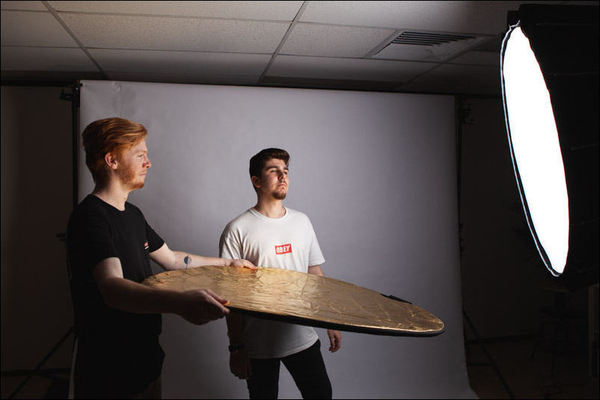
Reflectors should be used in any basic studio lighting setup for portraits. Using a reflector is a simple way to manage the light distribution on your set, and they have many versatile functions. They’re lightweight, so easily portable, simple to set up, and inexpensive to boot—just check out this Large 5-in-1 Reflector Disc Set from Hypop—that’s five different reflector surfaces for the price of one.
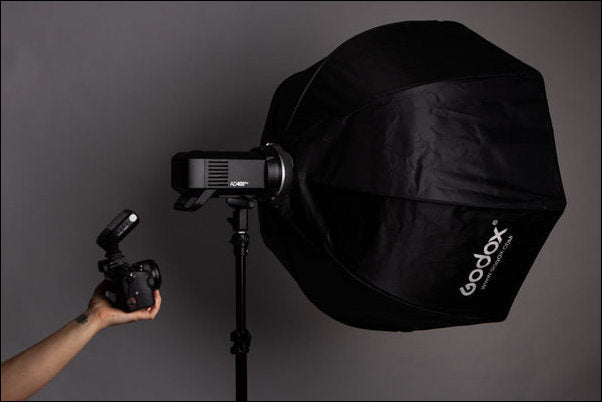
To make the most out of your reflectors for portraits, your studio’s basic lighting setup should include a few other items. For starters, you need a strobe. This Godox AD400Pro Witstro Portable Strobe Kit comes with everything you need—the flash strobe head, a stand, an octagonal softbox, and even a customizable trigger that can be used with cameras from Nikon, Canon, Sony, Fuji, and Olympus/Panasonic.

You can also go for something like this Kreator Kit by Hypop. This kit is complete with a muslin backdrop and a backdrop stand, as well as a double softbox lighting set. These softboxes are rectangular—and what makes them different from octagon softboxes is that by emitting light in a square pattern, they provide a rectangular or window-shaped catch light for your photos. This makes rectangular softboxes more suitable for model shots and blanketing areas from top to bottom.
Taking your portrait studio outside? Go for it! But don’t forget your reflectors, because they’re also especially useful if you’re working with abundant natural light. A reflector will give you up to three stops more light than you would have without using one.
Not to mention, they’re great for lessening that super harsh light that shines in the middle of the day. You can even use a reflector outdoors to brighten up backlit subjects and avoid the silhouette effect.
Reflectors as Your Fill Light
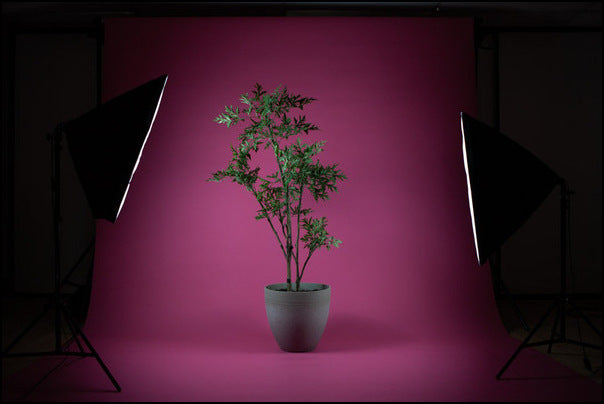
Using a reflector as a fill light is probably their most common use. Of course, the fill light is there to add light to your subject that isn’t illuminated by your key light. By setting up your reflector opposite your main light, you’ll be reflecting the main light back on to your subject, from the other side at maximum capacity. With a reflector, the shadows on your subject are filled in, giving the photograph some much-needed depth and dimension.
But that set up isn’t a hard rule. You can move your reflector around and test out new angles and find your money shot. When manipulating the light with a reflector, it’s very simple to adjust the positioning to try out different schemes.
The light that reflects off your reflector won’t be as strong as what’s coming from your key light, of course, so they’re great for maintaining that trusty three-to-one lighting ratio.
Reflectors as Your Key Light
Sounds crazy, right? After all, a reflector merely reflects—it’s not a light! But so many professional portrait photographers are using this technique to achieve beautiful, soft light on their subjects.
To use a reflector as your key light in a basic studio set up, or even outdoors, the actual light should be behind your subject. Then, you place the reflector in front of them so that the light bounces back on your subject, thus creating a soft glow. The only thing here is that you just need to take care that you’re not positioning yourself and your camera directly in front of the light and allowing it to shine right into your lens.
You can also use a reflector to create a more dramatic look by reflecting a concentrated beam of light as well, it just has to be further away from your subject. Whereas bringing your reflector right up to your subject’s face will give an interesting rim light effect.
Reflectors, Cameras, and Shoot!

So, your basic studio lighting setup for portraits will include a reflector (or a reflector with many different surfaces), a strobe, at least one softbox, a backdrop on a backdrop stand, and of course, your camera! Triggers are also very helpful.
Portraits aside, reflectors can also be used in many other kinds of photography like fashion, product, and even landscape photography. Filmmakers will employ the use of reflectors as well.
Pro tip—if you’re working alone and your hands are full, you can either set your reflector up on a boom, lean it or prop it up against something, or, and this one’s our favourite, just have your subject hold it out of the frame. That’s the beauty of portrait photography!



